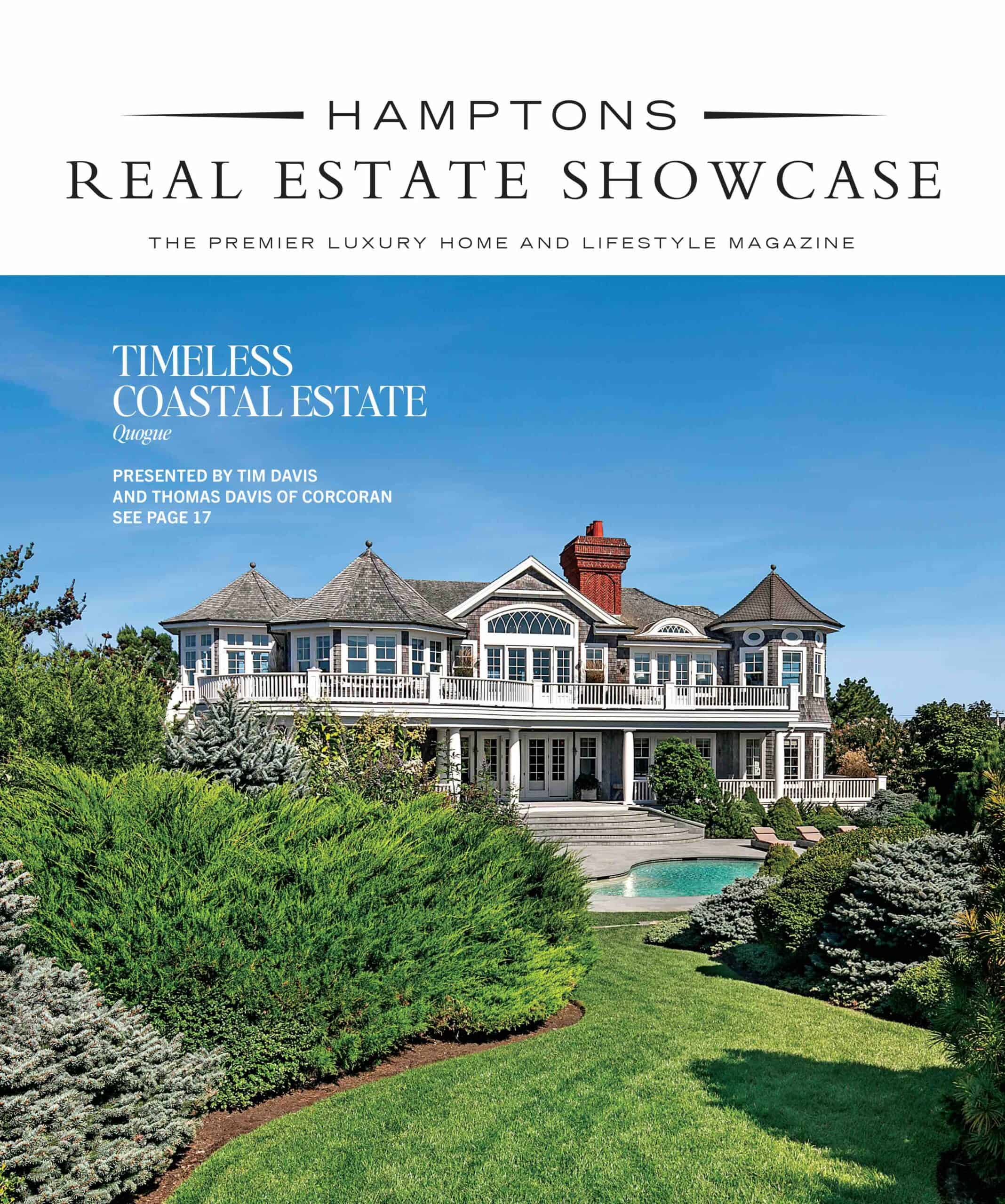 “Historic Howell House In Bridgehampton May Be Demolished,” read the January headline in 27East.com. Francois de Menil, the owner of the 1840 house (and brother of Adelaide de Menil, who famously donated a clutch of historic buildings to the Town of East Hampton), has applied to demolish the historic Quimby Lane dwelling. That announcement came on the heels of the tragic razing of the important Pyrrhus Concer House in Southampton.
“Historic Howell House In Bridgehampton May Be Demolished,” read the January headline in 27East.com. Francois de Menil, the owner of the 1840 house (and brother of Adelaide de Menil, who famously donated a clutch of historic buildings to the Town of East Hampton), has applied to demolish the historic Quimby Lane dwelling. That announcement came on the heels of the tragic razing of the important Pyrrhus Concer House in Southampton.
The bad news: Historic houses are being decimated all over the South Fork to make way for newer and bigger.
The good news: Some homeowners are dedicated to preserving these silent relics of our heritage.
One such salvaged property is Ludlow-Grange, an early 19th century dwelling that would have met with the wrecking ball if not for the loving devotion of its present owners, Andrea Madaio, a former Bridgehampton Historical Society Board member, and her husband, Douglas.
Located on Montauk Highway, the Bridgehampton house was a shambles when the couple first viewed it in 1999 – in such disrepair that a builder sniffing around the property was planning on tearing it down. The exterior, painted a hideous blue, was rotting, the once magnificent wraparound porch was held up by 2-by-4s, a raccoon was nesting on the third floor and a 12-foot-long hive teeming with 80,000 bees was attached to the eaves. “Get the thought out of your head,” Douglas warned his wife.
But, says Andrea: “You could see in its heyday this house was something. It had a beautiful layout, you could see the bones.” Like many first time renovators, they were naïve about the extent of the process. “We didn’t know what we were getting into.” By the end of restoration, they figure they’d sunk circa a $1 million into it.
It certainly helped that Andrea was a practicing architect and interior designer. (She now primarily runs a title insurance company.) Even better, Douglas is a mortgage broker who was able to arrange financing for what was essentially “an unmortgageable property.”
A hybrid of three architectural styles, the house was originally built as a saltbox circa 1820 by the Ludlows, and in the 1840s Captain Isaac Ludlow, a whaling ship captain, turned it into a grand Greek Revival-style manse. In the 1880s it was rebranded with a Victorian persona replete with turrets. The restoration included gutting the back of the house – the original saltbox, and transforming it into a 21st century kitchen. In other parts of the structure layers of wall coverings were peeled back to reveal pleasant surprises such as linen wallpaper. Broken or missing plaster moldings were repaired and restored back to the original. An expert was able to scrape all of the marquetry and wood moldings down to the bare wood and preserve the fine carving. A faux-painted ceiling complete with Greek key borders was documented but not saved, it being “so dark and heavy.” A front room was found to be clad in cherry marquetry, receipts for the work archived at the Bridgehampton historical society.
The couple was not so fortunate in preserving the barn. The decade they spent seeking variances to make the nonconforming structure livable for Andrea’s parents made it unsalvageable. “I don’t think any of my neighbors would like me raising livestock,” she laughs. However, they have rebuilt it.
“Southampton would benefit from more people like the Madaios, people who recognize the value of these historic resources and bring them back to life so they can continue to contribute their narrative of the social, cultural, and architectural evolution of this historic place to the community, its children, and visitors,” says Sally Spanburgh, chair of the Southampton Town Landmarks and Historic Districts Board.
Indeed. As Andrea says, “We rescued an old lady.”










![Space reservations are closing soon for the Holiday / New Year Issue of Hamptons Real Estate Showcase 🎁 This double issue comes with expanded reach, now landing in South Florida as well. Start the new year with premium visibility among luxury homeowners from the Hamptons to Miami. [link in bio]](https://hamptonsrealestateshowcase.com/wp-content/uploads/sb-instagram-feed-images/588642217_18550541596030135_1974828802096238970_nfull.webp)
![Holiday hosting is all about the details 🕯️ This season’s tabletops mix nostalgic charm with fresh touches. Think layered textures, seasonal greens, and flickering candlelight. Whether it’s a quiet dinner or a festive feast, there’s beauty in every setting. [link in bio]](https://hamptonsrealestateshowcase.com/wp-content/uploads/sb-instagram-feed-images/587562593_18550195297030135_5307983913708101790_nfull.webp)
![There’s no shortage of thoughtful, design-forward gifts to discover across the East End this season 🎁 Whether you're shopping for a hostess, a homebody, or someone who simply loves beautiful things, we’ve rounded up a few local finds that are sure to surprise and delight. [link in bio]](https://hamptonsrealestateshowcase.com/wp-content/uploads/sb-instagram-feed-images/587623967_18550040371030135_5392968951052147490_nfull.webp)


![@raphael_avigdor brings his signature boldness and emotional depth to this year’s Art Basel, unveiling a solo show that’s as personal as it is powerful. Presented by London gallerist Rebecca Hossack, the exhibition celebrates his latest photographic book Both Sides Now, a visual homage to the layered lyrics of Joni Mitchell.
The show opens on December 4, 2025 from 6PM–9PM at her newly renovated home and gallery in East Little Havana. [link in bio]](https://hamptonsrealestateshowcase.com/wp-content/uploads/sb-instagram-feed-images/584394178_18549642664030135_1592235407580770939_nfull.webp)

